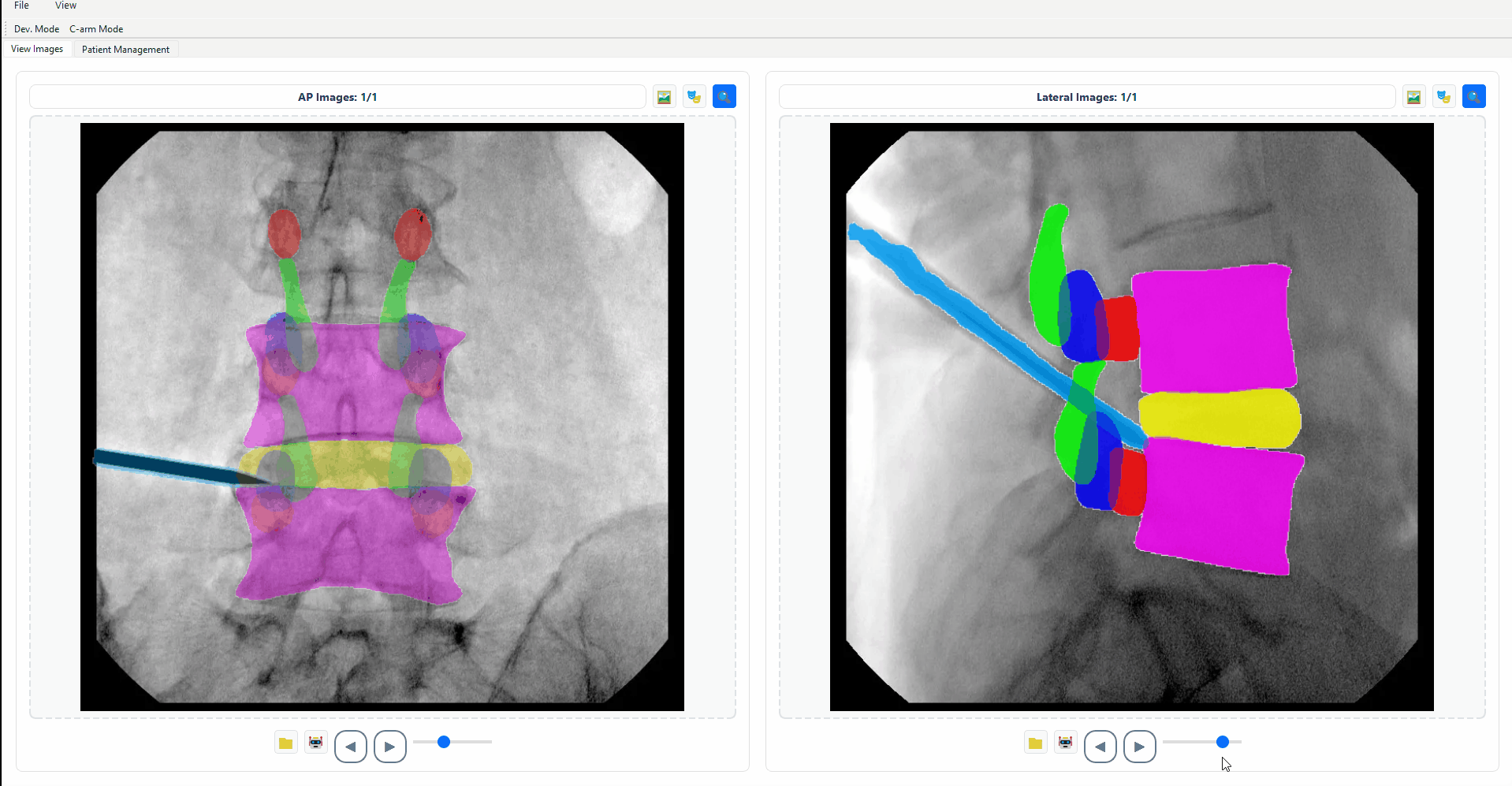ApostureVision AI: AI-Enabled Navigation & Robotic Surgery Platform
Why navigation and robotics?
✴ PLEF and ApostureFlex were designed to be as minimally invasive as possible, and operating with C-arm imaging is challenging. ApostureVision AI provides the missing set of eyes into our surgical procedures—a real-time visual representation of the spinal anatomy to guide surgery.
✴ Navigated and robotic procedures command premiums, while generating long-term savings for hospitals and the healthcare system.
✴ ApostureVision AI integrates our surgical procedures into a single platform and unified offering.
How does it work?
✴ ApostureVision AI takes raw anterior-posterior C-arm images, and its deep learning model recognizes and labels spinal structures.
✴ ApostureVision AI will then convert segmented AP images to a lateral view and integrate surgical tool tracking and pressure sensors, giving the surgeon real-time visual guidance for surgery on a console.
✴ The system will collect data from procedures and get smarter with each operation. Robust data, including tool tracking, will then control robotic arms.
✴ Unlimited possibilities for pre-op image analysis, surgical planning, training, and global collaboration.
Note: The ApostureVision AI is developmental. It has not been cleared or approved by the FDA and is not being offered for sale in the United States at this time. Check back for news on our innovation pipeline.
The first steps toward AI-enabled surgical navigation: ApostureVision AI analyzes, identifies, and labels spinal anatomy from raw C-arm (AP) image; subsequent conversion to lateral image.

